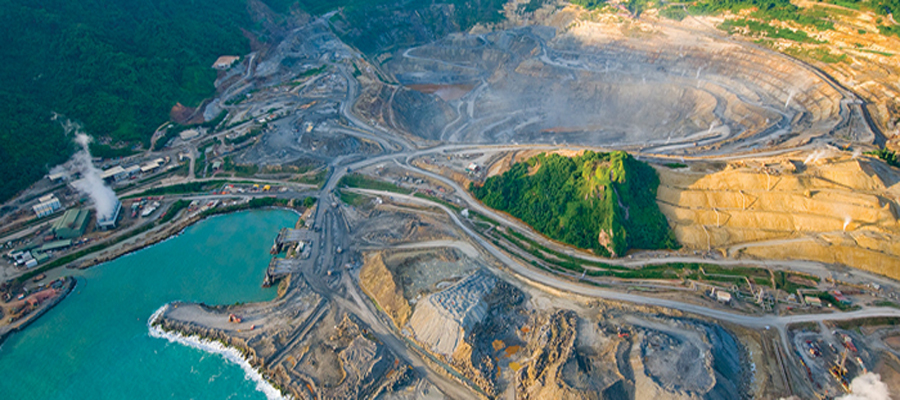Mining in Five Dimensions
If you think that mining is a 3D problem, think again. Mining Innovation, Rehabilitation and Applied Research (MIRARCO) vice-president, Andrew Dasys, says that several projects and testings carried out since 2001 in the Virtual Reality Laboratory (VRL), show that mining is more like a 4D or 5D challenge.
“When companies come to us with their data and they see where the biggest ore resources are located, they wish they had come earlier,” says Dasys.
Located in Sudbury, Ontario and developed in association with Laurentian University, the world’s first collaborative, immersive Virtual Reality Laboratory (VRL) has already proved its value.
“Computer technology is allowing companies to come up with detailed models of the deposits that integrate time and uncertainty, which can provide a new level of understanding and decreased risk,” explains Dasys.
 Although one of the first applications of VR in mining was on training and safety, today data visualization is gaining popularity.
Although one of the first applications of VR in mining was on training and safety, today data visualization is gaining popularity.
“The ergonomics of the lab allow such a terrific opportunity for group work. We walked away from that first session with 11 new exploration targets,” says Damian Duff, Manager of Geology Xstrata Nickel (formerly Falconbridge Limited).
Duff adds that they would have found them eventually without the use of the VRL, “but the ease of viewing the data and the access to teamwork allowed us to recognize these targets sooner. It lends us the opportunity to look at our data like we’ve never done before. We’re no smarter than the people before us – we just have better tools.”
The most obvious advantage of using the VR facility for exploration companies, says Dasys, is that they can integrate new drilling results with historical drill data from a given property, which can determine the extent of the ore deposit in minutes.
“MIRARCO’s 3D modeling is a great tool to help visualize the drill holes and ore zones,” says Nuinsco Resources President, Paul L. Jones. “It’s really useful for communicating the scope and size of ore deposits to investors who may not have a lot of technical background but see the extent of the ore from the existing drill data.”
The VRL has a 22-foot radius spherical screen of 3.9 million pixels that allows visitors to find themselves surrounded by a seamless three-dimensional stereographic image. That view draws them into a virtual representation of their most complex data sets.
Worth a Billion Words
The power of VR lies in its ability to visualize information and make decisions based on what is seen, without going through elaborate mathematics or expensive trial and error processes. When placed in the mining context, where costs can exceed hundreds of millions of dollars, the benefit becomes immediately apparent. Decision makers can gather in a VR facility to understand the impact of their decisions on all aspects of the process – exploration, mine planning, design, operations and closure – and how this will affect the bottom line.
When a company’s decision makers see their collective data in immersive VR, explains Dasys, the team can easily identify opportunities in their project: a new strategy; a better process; a defining trend. This is VR data integration, where multiple data sets can be compared, modified, combined and turned into pivotal, profitable information.
“Typically it takes a few hours for groups to start looking at data along geological trends instead of the long and cross sections that are traditionally used to plan mines and exploration programs,” he adds.
VR has already allowed key players in the oil and gas industry to cut 20 to 50% of the time out of an acquisition evaluation; however, the technology has not been as rapidly adopted in the mining sector.

Groundbreaking Research
Not only mining companies are taking advantages of the VRL; ongoing research is taking place at MIRARCO that aims to generate innovative solutions for industry and the real world.
Last summer, a master’s student in biology at Laurentian University spent three months looking at what goes on in geologists’ brains while they are using 3-D imaging.
Mathew Hunter’s idea is to learn how to lessen the load on the brain as a person uses a new technology. For instance, the iPod is not as sophisticated as other MP3 players, “but it’s so easy and fun to use, people choose it over other brands,” Hunter says.
The result of this study will be applied to the assessment of land and the operation of machines in the world of mining.
Links and References:
- Exploring Non-Linear Data Relationships in VR using the
- 3D Visual Data Mining System
- Innovations in Mine Planning and Design Utilizing
- Collaborative Immersive Virtual Reality (CIRV)
- Laurentian University
- MIRARCO
- Ontario
- Virtual Reality in Mine Training
- Virtual Reality Laboratory
- Sudbury
- Xstrata Nickel
{{ commodity.name }}
{{ post.title }}
{{ post.date }}

Comments